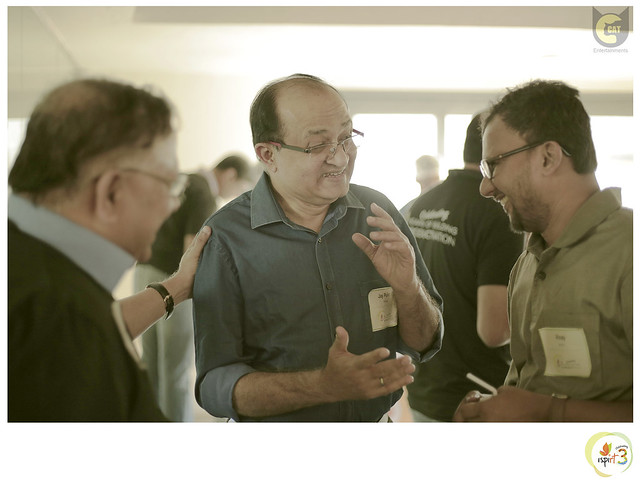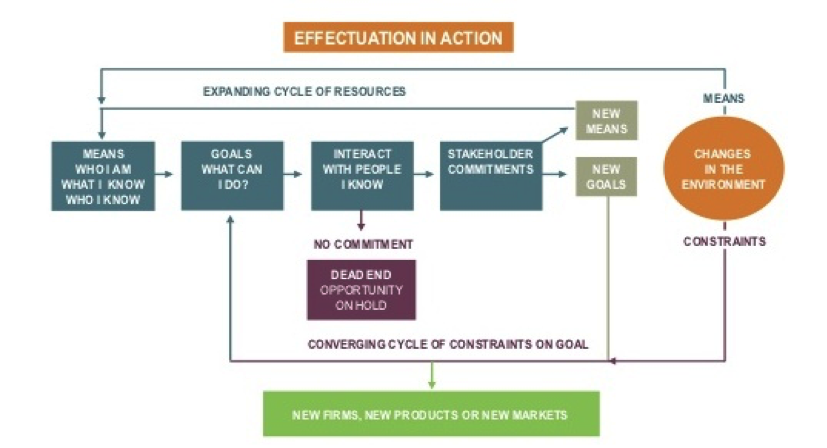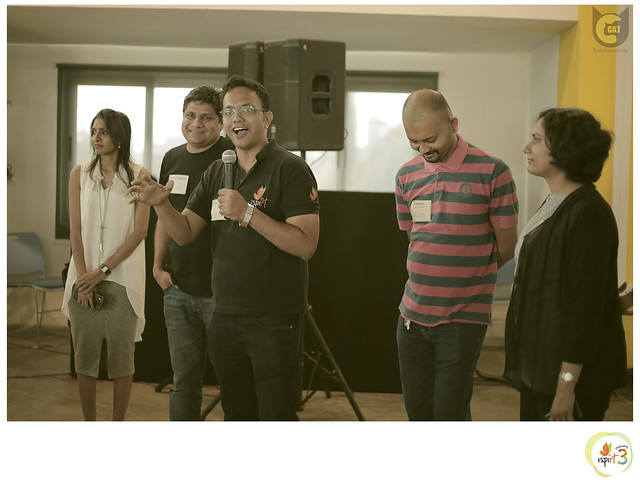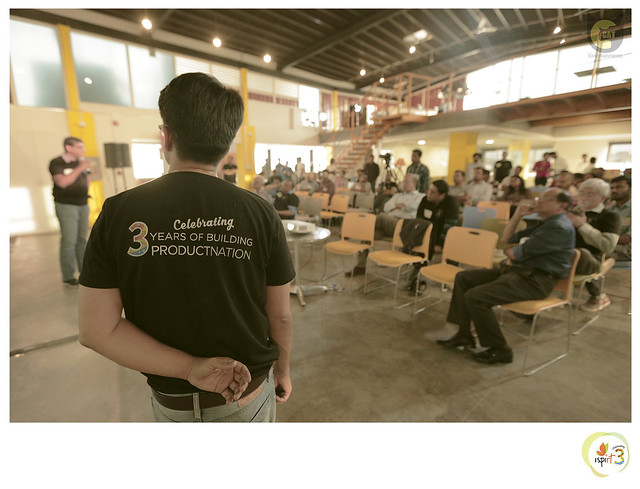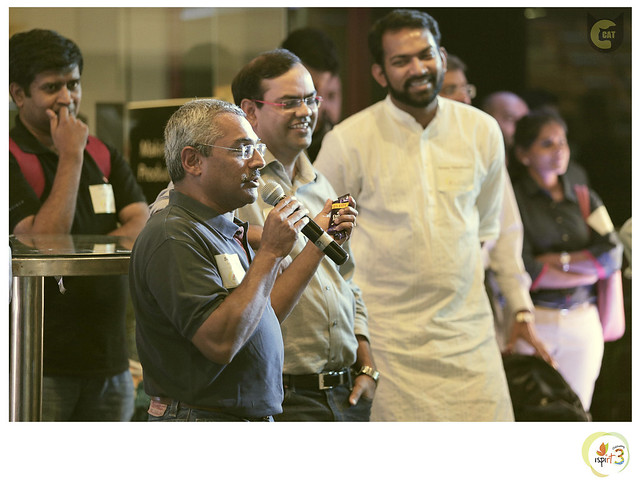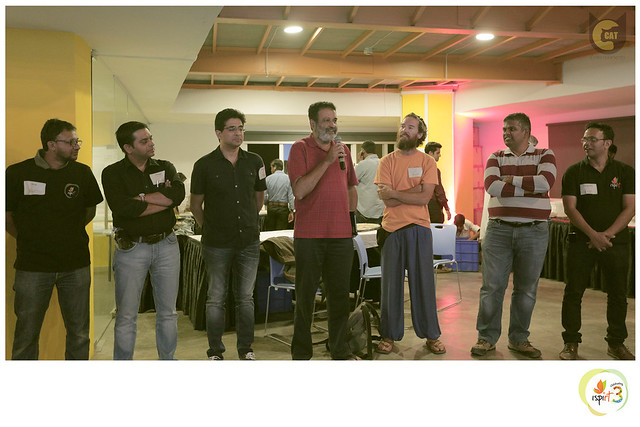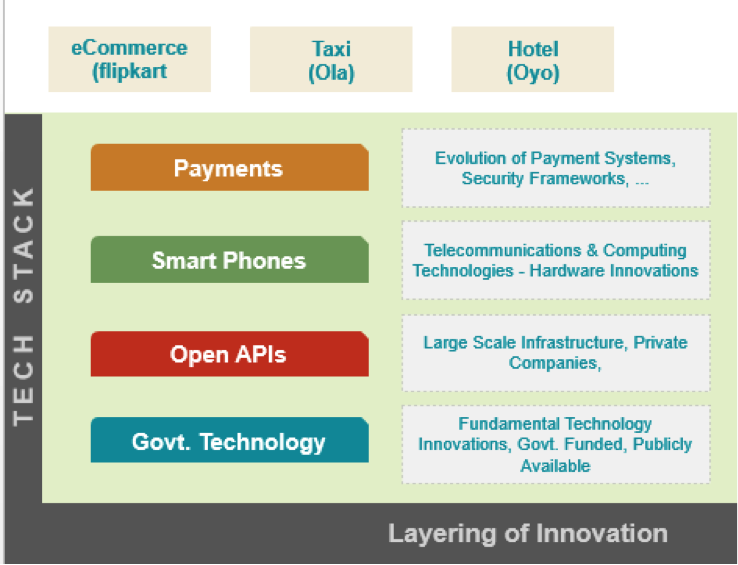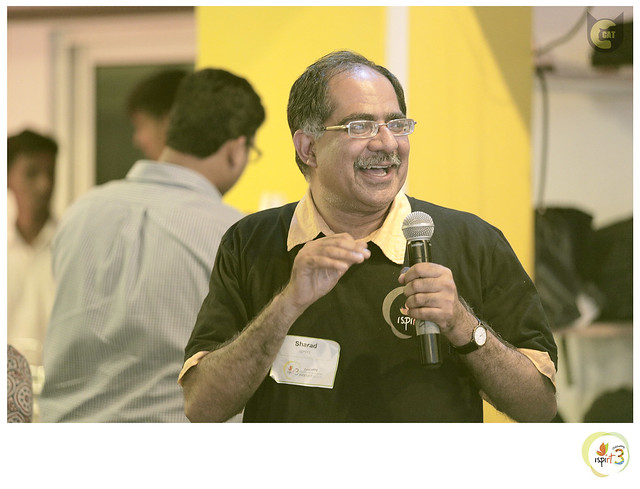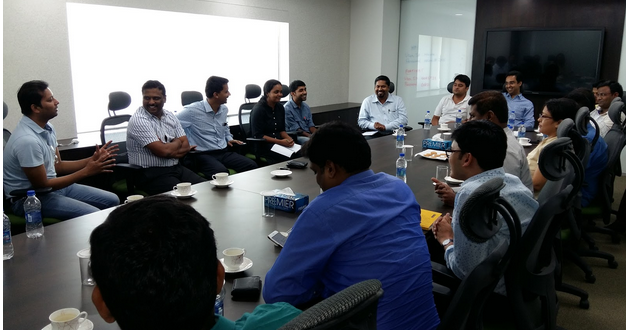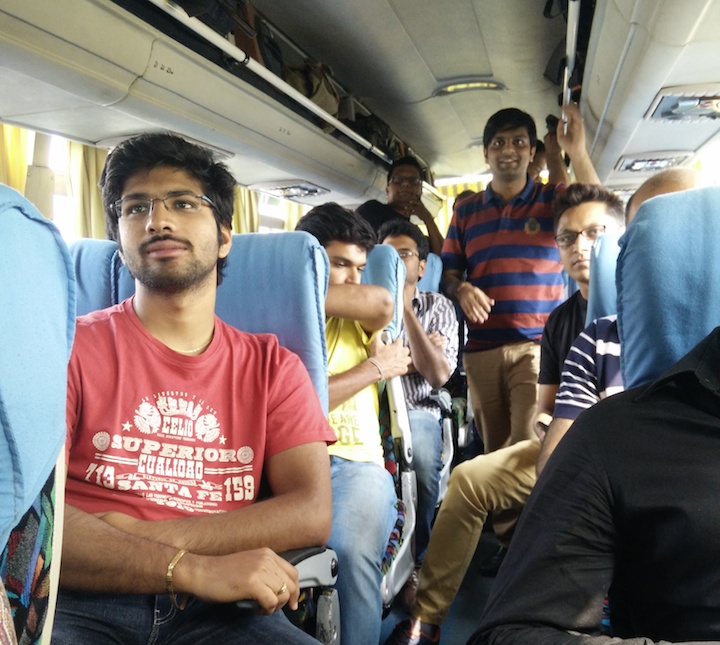The sea breeze was cool. And the SaaSy people went cool as well. Kiruba unleashed some tricks for networking that had the participants engaging in banter, fun and games on the lawn. It also wore off the participants from postprandial somnolence (carb coma) after lunch. The SaaSy bus by then had arrived from Bengaluru, and the participant number swelled to 150 or so.
Using your product as a marketing tool
Pallav Nadhani set the theme for #OneThing discussion involving of Siddharth of Practo, Nemesh of Appointy, and Ankit of AdPushup. He cited examples of MailChimp, which sends annual reports about the number of mails sent through its service, and Rancore, a research organisation that sent reports about Share Point, a Microsoft product for developers. He said that research reports set benchmarks for what works. He spoke of referral marketing and commission paid on referrals to existing customers as strategies to acquire customers without much of a marketing spend. Avlesh of WebEngage said that marketing does not exist in silos away the product. He spoke of incorporating the marketing element inside the product itself.
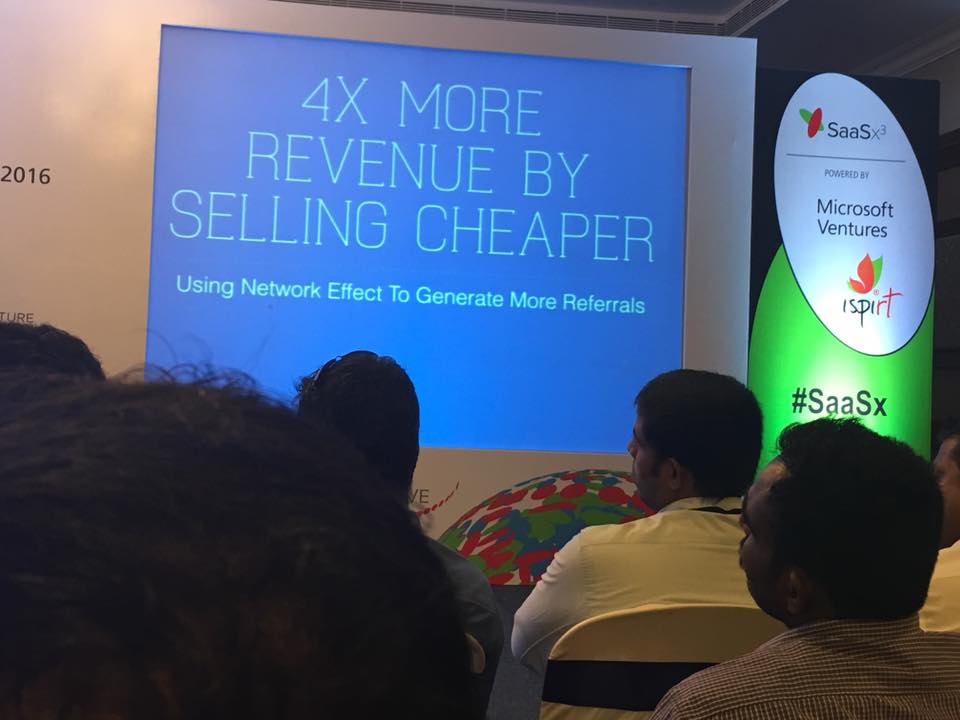 One strategy is using the “powered by *product logo*” inside the product to attract more prospects. This was especially used in a novel way. WebEngage chose a customer (of course, after a due diligence) to sell its low-priced product in an unpresent geography. Then the logo was added in the product to attract more customers in the region. The customer acquisition cost is reduced as a result. Nemesh of Appointy (which helps businesses to schedule appointments) has 118,000 customers, all of them acquired at zero cost of marketing. This was done through backlinks (two lines of codes in the product), which would indirectly show up in the Google search when someone searched for a tool for appointments. Ankit spoke of four strategies to customer acquisition without much marketing spend.
One strategy is using the “powered by *product logo*” inside the product to attract more prospects. This was especially used in a novel way. WebEngage chose a customer (of course, after a due diligence) to sell its low-priced product in an unpresent geography. Then the logo was added in the product to attract more customers in the region. The customer acquisition cost is reduced as a result. Nemesh of Appointy (which helps businesses to schedule appointments) has 118,000 customers, all of them acquired at zero cost of marketing. This was done through backlinks (two lines of codes in the product), which would indirectly show up in the Google search when someone searched for a tool for appointments. Ankit spoke of four strategies to customer acquisition without much marketing spend.
The VC speak
Mohan from Norwest said the SaaS multiples have compressed in the United States – it’s five times the revenue now rather than the 10x number that was the norm until sometime ago. He also said that SaaS companies have a history of not making a profit but was confident that it is possible to build a profitable SaaS company in India, which is capital-efficient.
Tarun of Matrix Partners clarified that now the focus has shifted to profitability of SaaS companies rather than growth. He said that growth expectations are tempered according to existing market conditions. Now, liquid capital is not available easily. He agreed that there was a time when growth was the focus when the capital was easily available. Now that capital has shrunk, it’s difficult to have a growth at the cost of profit strategy but the one focused on profits is the best.
Tearing down the product
Frictionless sign-up, a clutter-free website and a shortest path to functional wow! are some of the elements of the SaaS product that is self-serving and sold to remote customers. Three products were at the receiving end … er … learning end from Suresh Sambandam of KissFlow, Bharat, head of UX at Freshdesk, and Shekar Kirani of Accel. While Suresh focused on the sign-up aspects, Bharat gave feedback on design whereas Shekar pinpointed the market focus. Zipboard, Hummingbill and Canvas Flip were the three products that were reviewed on stage.
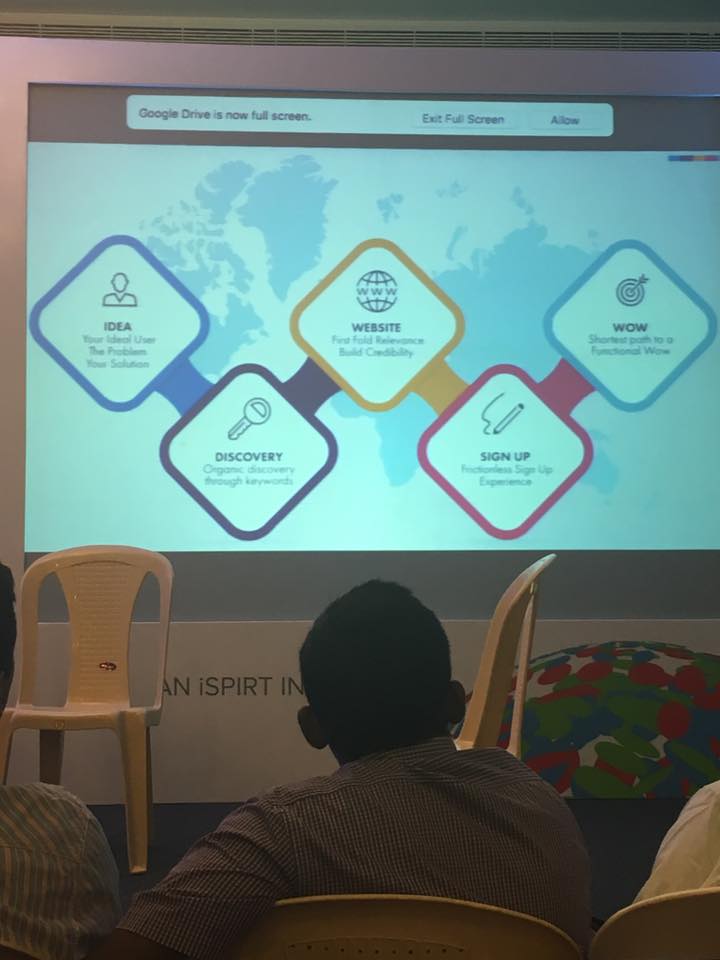
This was easily the most popular segment of the day. There was laughter, there were learnings, there were moments of revelation, and on top of it, the three products wouldn’t have received such an honest feedback elsewhere. Shekar’s advice was worth a weight in gold especially for Zipboard and CanvasFlip. He was laser sharp in identifying the right customer segment and market and the entrepreneurs in the audience were overawed by his clarity.
The audience felt that Product Teardown deserves to be expanded in future editions of SaaSx. Peer feedback is valuable and helps to refine the product to make it efficient to acquire more customers.
The grand finale of the day was Girish making a fantastic presentation on his journey – from $1 million to $5 million. At each stage in the presentation, he called in the team members who worked on identifying a specific problem and explained what worked and what didn’t. What came through was the endeavour that propelled everyone at Freshdesk to work towards a common goal. What made these young guys work like men (and women) possessed is the specialty of the Freshdesk culture. Not much detail can be revealed, as we have to respect the fact that Freshdesk is a funded company. But what Girish said at cocktail was taut: “When I am on stage, if some guy thinks if he can do it, I can also do it, I am happy about it” It is suffice to say those who were at the hall were pumped with inspiration by Girish to think big and if you need that, you have to make it to SaaSx. See you there!



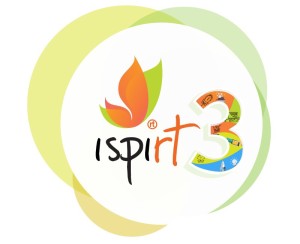 On Saturday, I was going to attend 3rd year anniversary event of iSPIRT On the way on my bus to meeting, my mind was filled with varied thoughts about 2010 or earlier, when I was outsourced product start-up employee. Looks like little time ago, 6 years has passed from 2010 when I met the volunteers of NPC. Sharing comments to volunteers (Avinash, Rajan, Vijay, Manju, Suresh) on lack of “Made in India” products, I learnt that their thoughts were similar and more advanced. In addition, while I was talking, they had larger dream to create ecosystem where tech geeks are proud of creating products and the first baby step to create pride to come with products was NPC event.
On Saturday, I was going to attend 3rd year anniversary event of iSPIRT On the way on my bus to meeting, my mind was filled with varied thoughts about 2010 or earlier, when I was outsourced product start-up employee. Looks like little time ago, 6 years has passed from 2010 when I met the volunteers of NPC. Sharing comments to volunteers (Avinash, Rajan, Vijay, Manju, Suresh) on lack of “Made in India” products, I learnt that their thoughts were similar and more advanced. In addition, while I was talking, they had larger dream to create ecosystem where tech geeks are proud of creating products and the first baby step to create pride to come with products was NPC event.
